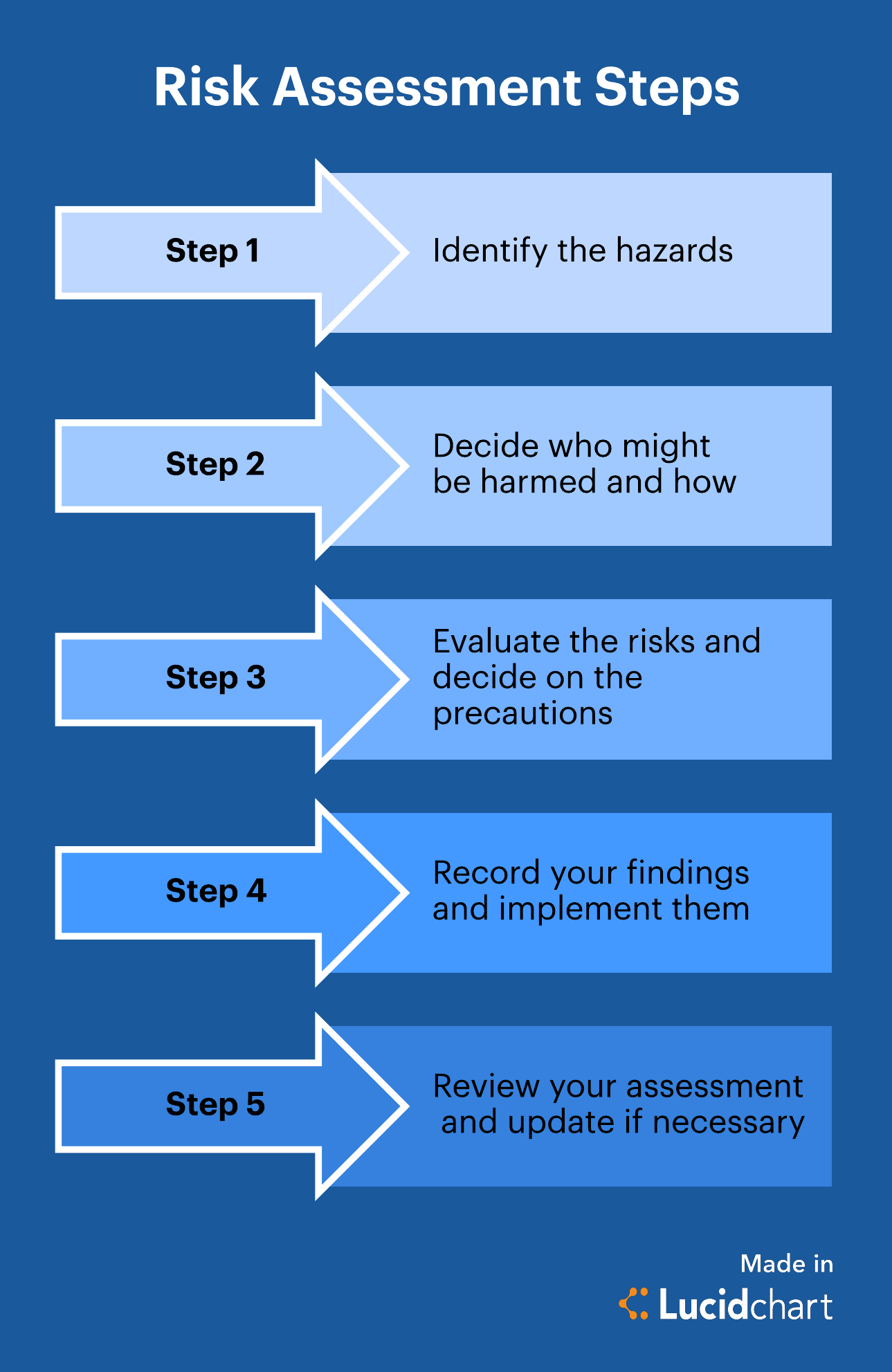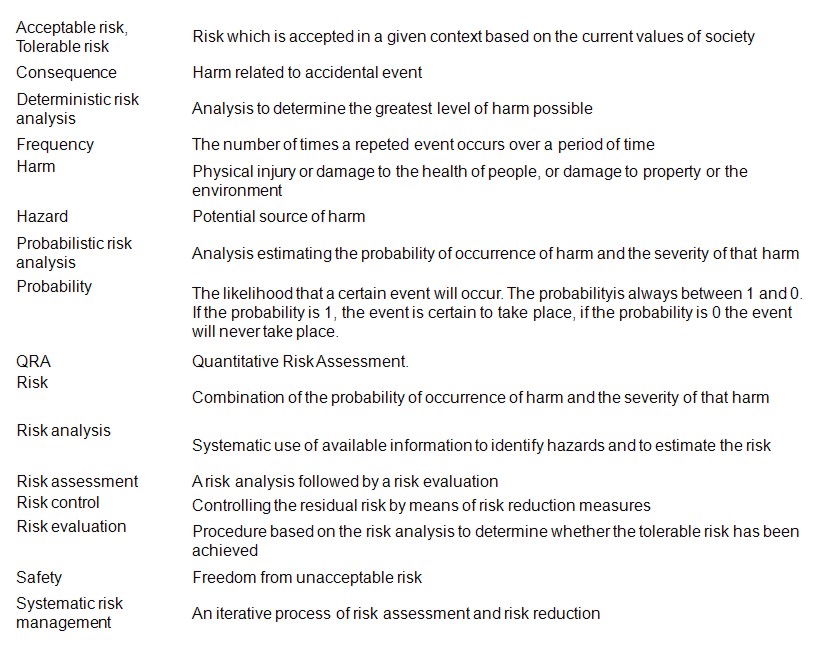Principles of risk assessment and hazard analysis
Home » chemical » Principles of risk assessment and hazard analysis >Principles of risk assessment and hazard analysis
Principles Of Risk Assessment And Hazard Analysis. In the context of a risk assessment the term sensitivity refers to the degree to which a system is affected by or responsive to a hazard. Principles and guidelines to assist HSE in its judgements that duty-holders have reduced risk as low as reasonably practicable. Cost Benefit Analysis. Anything that can cause harm electricity hazardous substances and noise are potential.
 Quality Risk Management Principles And Industry Case Studies Semantic Scholar From semanticscholar.org
Quality Risk Management Principles And Industry Case Studies Semantic Scholar From semanticscholar.org
Hazard Analysis and Critical Control Points. Before a risk assessment is produce the difference between a risk and a hazard must be knownHazard. The three main components of this is to outline the task hazards and control measures including step by step instructions on how to carry out the task by controlling the hazard. The minimum standard set out in this guidance. Pest risk analysis PRA is a form of risk analysis conducted by regulatory plant health authorities to identify the appropriate phytosanitary measures required to protect plant resources against new or emerging pests and regulated pests of plants or plant products. Specifically pest risk analysis is a term used within the International Plant Protection Convention IPPC Article 21 and is.
And further risk reduction measures are reasonably practicable.
Hazard mitigation planning reduces loss of life and property by minimizing the impact of disasters. A Job Safety Analysis JSA is a form of risk assessment that provides step by step details on the process to carry out a task in the workplace. That doesnt mean listing everyone by name but rather identifying groups of people eg people working in the storeroom or passers-by. Cost Benefit Analysis. Anything that can cause harm electricity hazardous substances and noise are potential. Although not required the use of a matrix such as the one.
 Source: progress-safety.co.uk
Source: progress-safety.co.uk
Cost Benefit Analysis. The risk management process consists of hazard identification risk assessment and hazard control. For example a community uses a road located close to. Risk management is defined for the purposes of the Codex Alimentarius Commission as The process distinct from risk assessment of weighing policy alternatives in consultation with all interested parties considering risk assessment and other factors relevant for the health protection of consumers and for the promotion of fair trade practices and if needed selecting. Combine the severity with the probability to determine the risk assessment code RAC or level of risk for each hazard expressed as a single Arabic number.
 Source: ehs.princeton.edu
Source: ehs.princeton.edu
That doesnt mean listing everyone by name but rather identifying groups of people eg people working in the storeroom or passers-by. A Job Safety Analysis JSA is a form of risk assessment that provides step by step details on the process to carry out a task in the workplace. In other words sensitivity captures the potential of a system to be impacted by a hazard. Hazard Analysis and Critical Control Points. Some workers have particular requirements eg new and young workers migrant workers new or expectant.
 Source: semanticscholar.org
Source: semanticscholar.org
How does a risk assessment work. That doesnt mean listing everyone by name but rather identifying groups of people eg people working in the storeroom or passers-by. A JSA can be completed on most tasks and is not limited to high. Some people tend to get fixated on the risk assessment part and do not place enough emphasis on hazard control. Assessing compliance with the law in individual cases and the use of good practice.
 Source: lucidchart.com
Source: lucidchart.com
A JSA can be completed on most tasks and is not limited to high. The risk management process consists of hazard identification risk assessment and hazard control. Policy and guidance on reducing risks as low as reasonably practicable in design. A Job Safety Analysis JSA is a form of risk assessment that provides step by step details on the process to carry out a task in the workplace. The result of the risk assessment is a prioritized list of hazards which ensures that controls are first identified for the most serious threat to mission or task accomplishment.
Source:
It begins with state tribal and local governments identifying natural disaster risks and vulnerabilities that are common in their area. A JSA can be completed on most tasks and is not limited to high. Some people tend to get fixated on the risk assessment part and do not place enough emphasis on hazard control. There are inadequacies in the potential major accident hazard identification and risk assessment process which are likely to render the basis for risk management decisions invalid. The relevant assessment principles from APOSC are not all addressed in the Safety Case.
 Source: slideplayer.com
Source: slideplayer.com
Product risk assessment elements 9 Identifying the product 10 Understanding the use of the product 10 Scenario development 11 Severity of injury and potential health effects 11 Probability of harm occurring 12 Risk estimation 12 Risk evaluation 13 Risk evaluation factors 13 Combining risk evaluation factors with the estimated risk 14 V. Principles and guidelines to assist HSE in its judgements that duty-holders have reduced risk as low as reasonably practicable. Each laboratory would have their own forms of risk assessments so there isnt set guidelines on how the risk assessment should be carried out. In other words sensitivity captures the potential of a system to be impacted by a hazard. Before a risk assessment is produce the difference between a risk and a hazard must be knownHazard.
 Source: hysafe.net
Source: hysafe.net
The minimum standard set out in this guidance. After identifying these risks they develop long-term strategies for protecting people and property from similar events. Although not required the use of a matrix such as the one. The Exposure Assessment Specialty Group EASG is comprised of Society for Risk Analysis members who are interested in the role of exposure assessment in risk analysis. HSE principles for Cost Benefit Analysis CBA in support of ALARP decisions.
 Source: hysafe.net
Source: hysafe.net
Hazard mitigation planning reduces loss of life and property by minimizing the impact of disasters. Some people tend to get fixated on the risk assessment part and do not place enough emphasis on hazard control. Open to all SRA members the group promotes and fosters independent and collaborative research in all facets of exposure science to advance the state of the art and serves as a resource to the Society in matters. Flood Risk Assessment 4-1 Chapter 4 Flood Risk Assessment Chapter Overview Any floodplain management program must be established on a sound technical and scientific basis in order to be effective whether for flood loss reduction or to manage natural resources or both. A structured seven-step process to analyze evaluate prevent and control risk and adverse events based on technicalscientific principles.
 Source: ivtnetwork.com
Source: ivtnetwork.com
For each hazard you need to be clear about who might be harmed. Risk management is defined for the purposes of the Codex Alimentarius Commission as The process distinct from risk assessment of weighing policy alternatives in consultation with all interested parties considering risk assessment and other factors relevant for the health protection of consumers and for the promotion of fair trade practices and if needed selecting. The risk management process consists of hazard identification risk assessment and hazard control. Hazard Analysis and Critical Control Points. There are inadequacies in the potential major accident hazard identification and risk assessment process which are likely to render the basis for risk management decisions invalid.
 Source: researchgate.net
Source: researchgate.net
Pest risk analysis PRA is a form of risk analysis conducted by regulatory plant health authorities to identify the appropriate phytosanitary measures required to protect plant resources against new or emerging pests and regulated pests of plants or plant products. In the context of a risk assessment the term sensitivity refers to the degree to which a system is affected by or responsive to a hazard. The three main components of this is to outline the task hazards and control measures including step by step instructions on how to carry out the task by controlling the hazard. Each laboratory would have their own forms of risk assessments so there isnt set guidelines on how the risk assessment should be carried out. That doesnt mean listing everyone by name but rather identifying groups of people eg people working in the storeroom or passers-by.
If you find this site helpful, please support us by sharing this posts to your preference social media accounts like Facebook, Instagram and so on or you can also save this blog page with the title principles of risk assessment and hazard analysis by using Ctrl + D for devices a laptop with a Windows operating system or Command + D for laptops with an Apple operating system. If you use a smartphone, you can also use the drawer menu of the browser you are using. Whether it’s a Windows, Mac, iOS or Android operating system, you will still be able to bookmark this website.